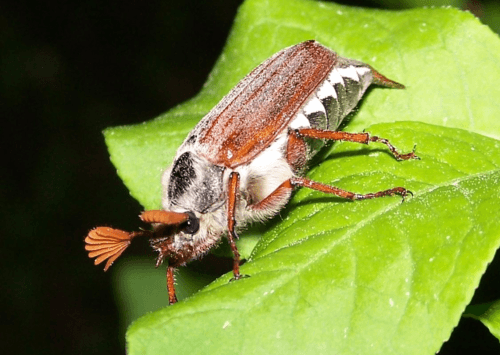Cockchafer, these 3 cm medium-sized beetles are somewhat similar to the garden chafer and summer chafer. Like the last two beetles, the common cockchafer belongs to the scarab beetles.
Also known as:
Maybug
Maybeetle
Cockchafer (Melolontha melolontha). These 3 cm medium-sized beetles are somewhat similar to the garden chafer and summer chafer. Like the last two beetles, the mayfly belongs to the scarab beetles (Scarabaeidae). The cockchafer is colored mainly brown with a fine white coat. As a result, the beetle appears to be dust-covered.
The beetle lives on leaves, where they can eat a shrub or tree completely bare. The larvae of the cockchafer – grubs – are also harmful. These live off the roots of plants and grasses and cause grasses and herbaceous plants to be detached from their roots and dry out.
Cockchafers are found in open grassy areas. In the summer, the beetles lay their eggs about 8 inches (20 cm) deep in the soil, preferably in a lawn or turf.
The natural enemies of this beetle are some species of ichneumon flies and dagger wasps, these insects parasitize on the larvae; moles and birds eat the grubs. At night when the adult cockchafers fly around, they are also caught and eaten by bats.
Control
The larvae of the cockchafer, the grubs, can be controlled with nematodes. Also available for sale is a funnel trap that lures and catches the beetles. This prevents the captured cockchafers from laying any more eggs.
Prevention
Provide a bird-friendly environment: birds eat insects including the cockchafer. Occasionally releasing a flock of chickens onto the grass also helps.

